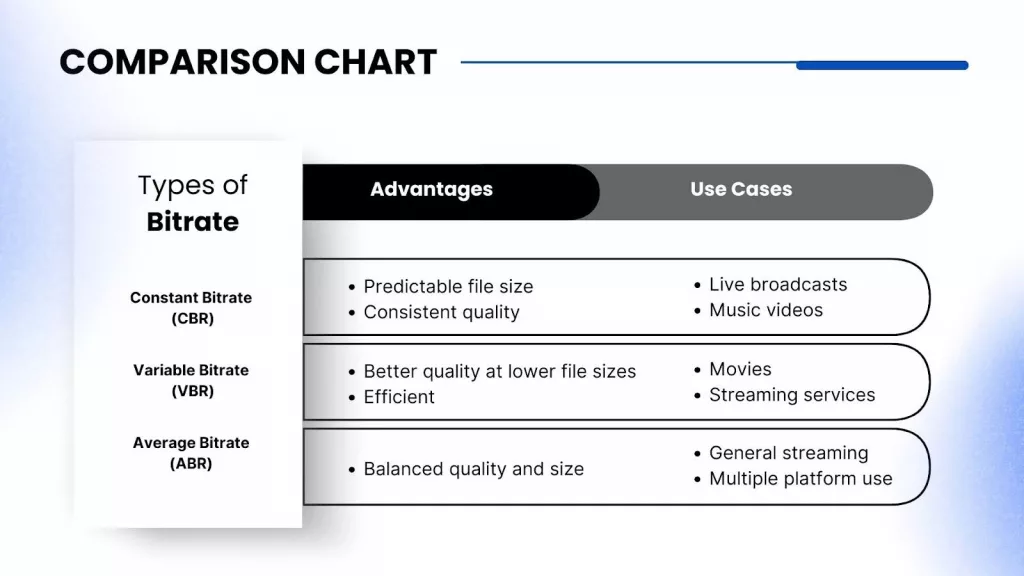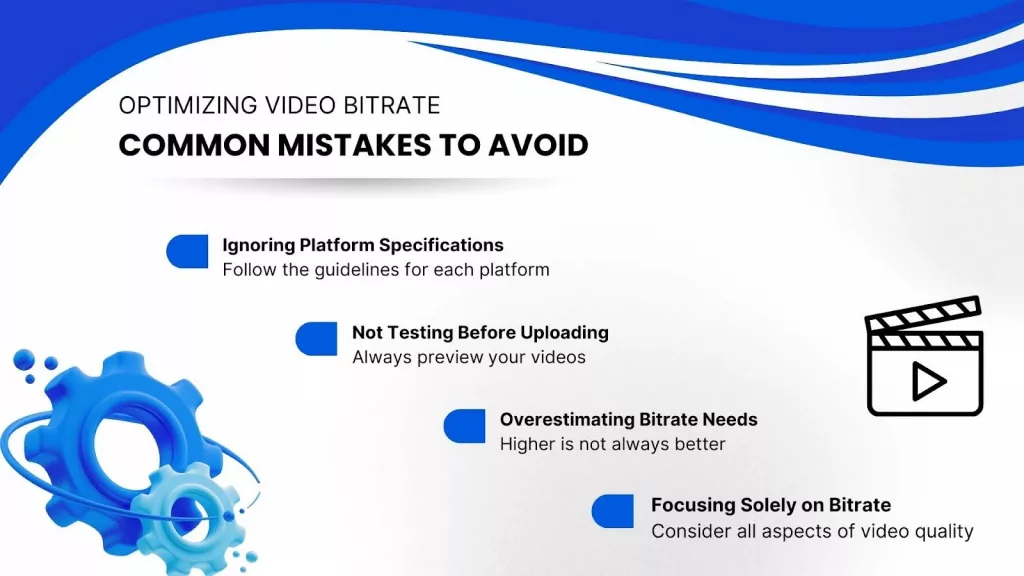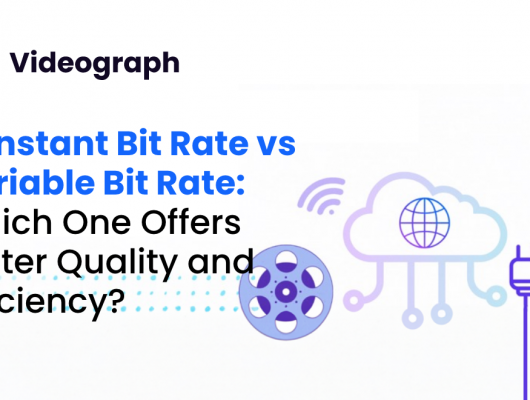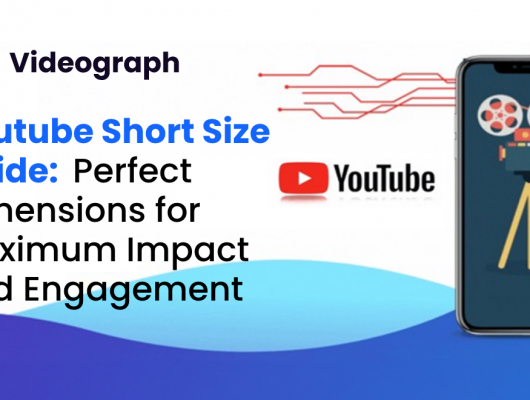Bitrate plays a crucial role in determining your content quality when it comes to video production. But what exactly is video bitrate? Simply put, it refers to the amount of data used to encode a video. Higher bitrates generally mean better video quality, but they also require more storage space and bandwidth for streaming.
Understanding bitrate is essential for video creators, whether you are uploading your work to YouTube, streaming on social media, or creating website content. Knowing how to optimize your video bitrate can significantly affect your audience’s experience.
This comprehensive guide will explore what is video bitrate, the different types, how it affects quality, and tips for optimizing it. Let’s make the most out of your video projects.
What is Video Bitrate?
You will come across ‘what is video bitrate’ in video production. It measures the data used to represent video content over a specific period, typically expressed in kilobits per second (commonly known as kbps) or megabits per second (Mbps). A higher bitrate means more data is transmitted, leading to better video quality.
It is important to understand how bitrate differs from resolution. While resolution refers to the number of pixels in a video, like 720p or 1080p, bitrate focuses on the amount of data used to encode that video. A high-resolution video can still look poor if the bitrate is too low, as the quality may suffer due to compression.
When discussing bitrate, you may also hear terms like data rate or video compression. Data rate is another way to express the amount of data being processed, while video compression refers to the methods used to reduce file size without significantly impacting quality.
Types of Video Bitrate

Constant Bitrate (CBR): CBR is a method where the bitrate remains the same throughout the entire video. This means that each second of the video uses the same amount of data.
Pros: Predictability as you can easily estimate file sizes, which is helpful for streaming platforms and broadcasting.
Use Cases: CBR works well for high-definition (HD) content, where maintaining a steady data stream is crucial for a smooth viewing experience.
Variable Bitrate (VBR): VBR adjusts the amount of data used depending on the complexity of the video content. For example, scenes with lots of motion or detail will require more data, while simpler scenes use less.
Pros: This method can improve overall quality at lower file sizes, which is especially useful in adaptive bitrate streaming.
Use cases: VBR is an excellent choice for platforms like Netflix and YouTube, where viewers may have varying internet speeds.
Average Bitrate (ABR): ABR falls somewhere between CBR and VBR. It aims to maintain a consistent average bitrate over the entire video while allowing for some fluctuations.
Pros: ABR can help ensure that video playback remains smooth, even during scenes that demand more data.
Use Cases: This approach is useful for various streaming platforms because it balances quality and file size.
How Bitrate Affects Video Quality
Bitrate has a significant impact on your video quality. For instance, a higher bitrate can provide better visuals if you are streaming a video online but may require more bandwidth. This can lead to buffering issues for viewers with slower internet connections. Conversely, a lower bitrate might make the video more accessible for streaming but can result in pixelation or blurriness, especially in fast-moving scenes.
Bitrate Recommendations for Common Resolutions:
- 720p (HD): A bitrate of about 2.5 to 5 Mbps is often sufficient for decent quality.
- 1080p (Full HD): You will typically want a bitrate between 5 to 10 Mbps for clear visuals.
- 4K (Ultra HD): For 4K videos, aim for a bitrate of 15 to 25 Mbps to maintain high quality.
These numbers can vary based on content type and intended platform, so it is always a good idea to experiment and see what works best for your specific needs.
How to Optimize Video Bitrate?
Choosing the Right Bitrate:
Think about the type of content you are creating, such as action, documentary, or animation, as they can require different bitrate settings. High-motion content typically benefits from higher bitrates to maintain clarity, while slower scenes may not need as much data.
Platform-Specific Recommendations:
Different platforms have specific guidelines for optimal bitrates:
- YouTube: For 1080p videos, YouTube suggests a bitrate between 8 to 12 Mbps for standard frame rates. For 4K content, aim for 35 to 45 Mbps.
- Vimeo: They recommend around 5 to 10 Mbps for 1080p and 20 to 40 Mbps for 4K.
- Social Media: For Facebook and Instagram, a bitrate of 4 to 5 Mbps for 1080p is usually sufficient.
Tools for Optimization:
- HandBrake: A free, open-source tool that allows you to adjust bitrate settings easily.
- Adobe Media Encoder: A professional-grade option for those who want more control over their encoding settings.
- Bitrate Calculators: Online calculators can help you determine the best bitrate based on your video’s resolution and format.
Common Mistakes to Avoid

Overestimating Your Needs: Many creators think that higher always means better. While higher bitrates can improve quality, excessively high settings can lead to large file sizes that are difficult to upload and share. Instead, focus on balancing quality without bloating your file sizes.
Ignoring Platform Specifications: Ignoring them can lead to issues with playback or reduced quality. Always check the recommended bitrate settings for your platform, whether it is YouTube, Vimeo, or social media. Tailoring your settings to match these specifications can significantly enhance your video’s performance.
Not Testing Before Uploading: Previewing your content and seeing how it plays at different bitrates can help you identify any quality issues or buffering problems that might arise during streaming.
Focusing Solely on Bitrate: While bitrate is important, compression settings, encoding formats, and resolution all affect how your video looks and performs. Consider the entire video encoding process rather than just focusing on bitrate alone.
Conclusion
Now that you understand video bitrate more clearly, consider applying these insights to your next project. Whether you are a creator or a videographer, optimizing your video bitrate can lead to better results and happier viewers.
FAQs
What is a good bitrate for a 1080p video?
For 1080p video, a good bitrate typically ranges from 8 Mbps to 12 Mbps for standard quality. If you want higher quality, especially for fast-moving content, you might consider using bitrates of 12 Mbps to 20 Mbps. Always keep in mind the platform’s recommendations for the best results.
Can bitrate affect buffering during streaming?
If the bitrate is too high for a viewer’s internet connection, it may lead to buffering issues. A low bitrate results in poor video quality. Balancing is key to smooth streaming.
How does bitrate relate to file size?
Higher bitrates mean larger file sizes, which can take longer to upload and may require more storage space. Conversely, lower bitrates reduce file sizes but can compromise video quality. Choose a bitrate that meets your quality needs while keeping file sizes manageable.
Are there standard bitrate settings for different platforms?
Yes, many platforms provide recommended bitrate settings to ensure optimal playback quality.







